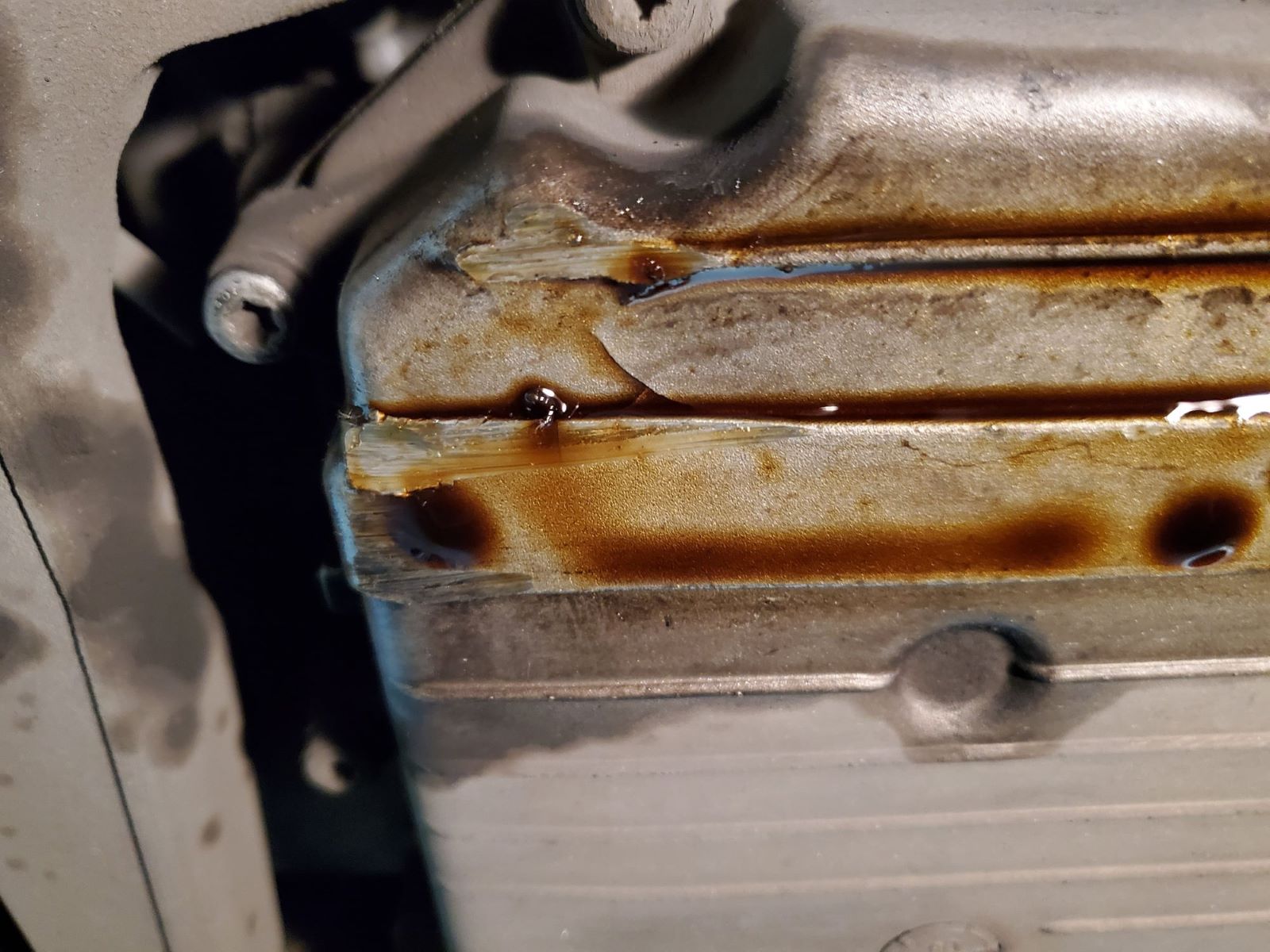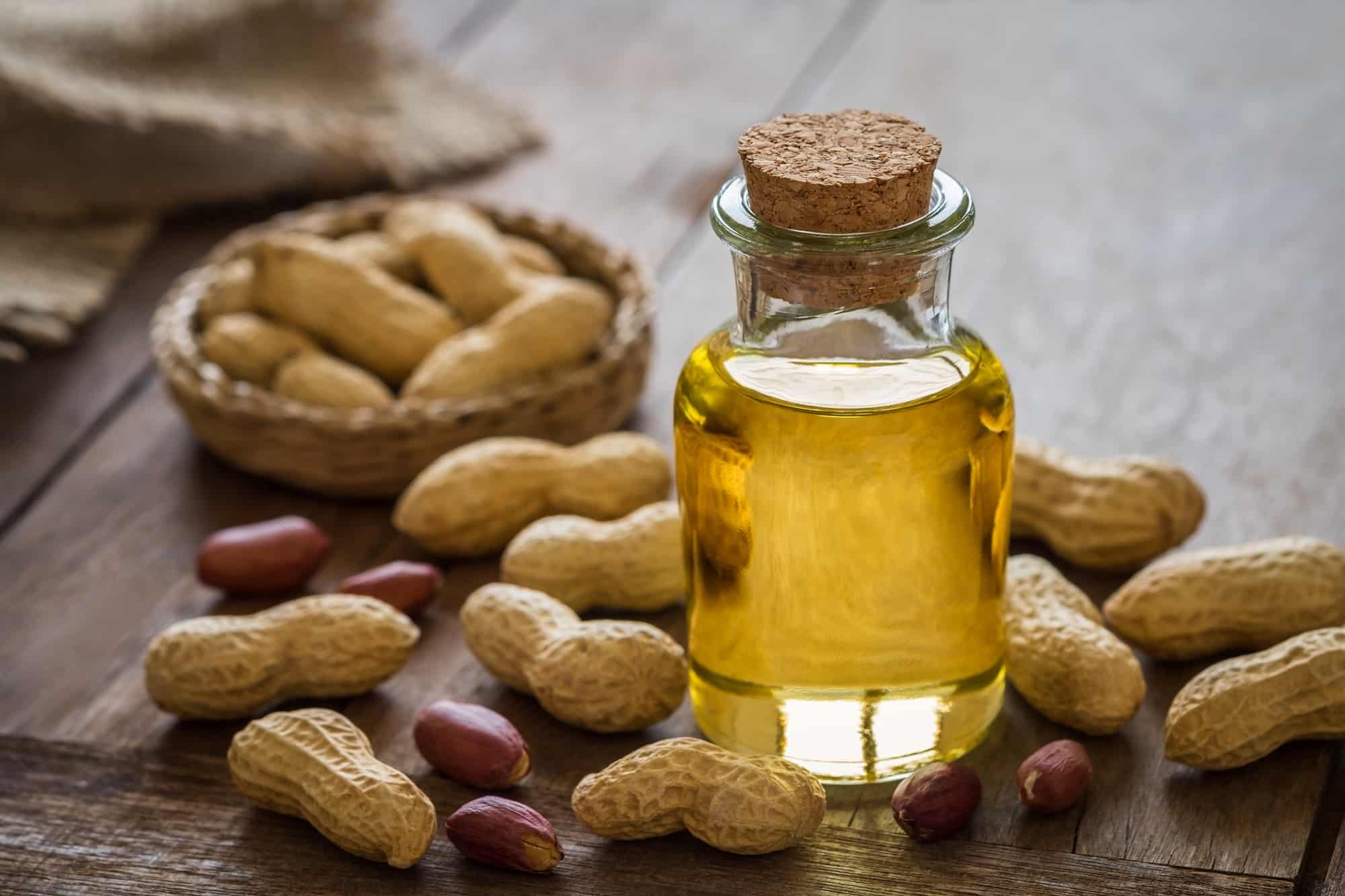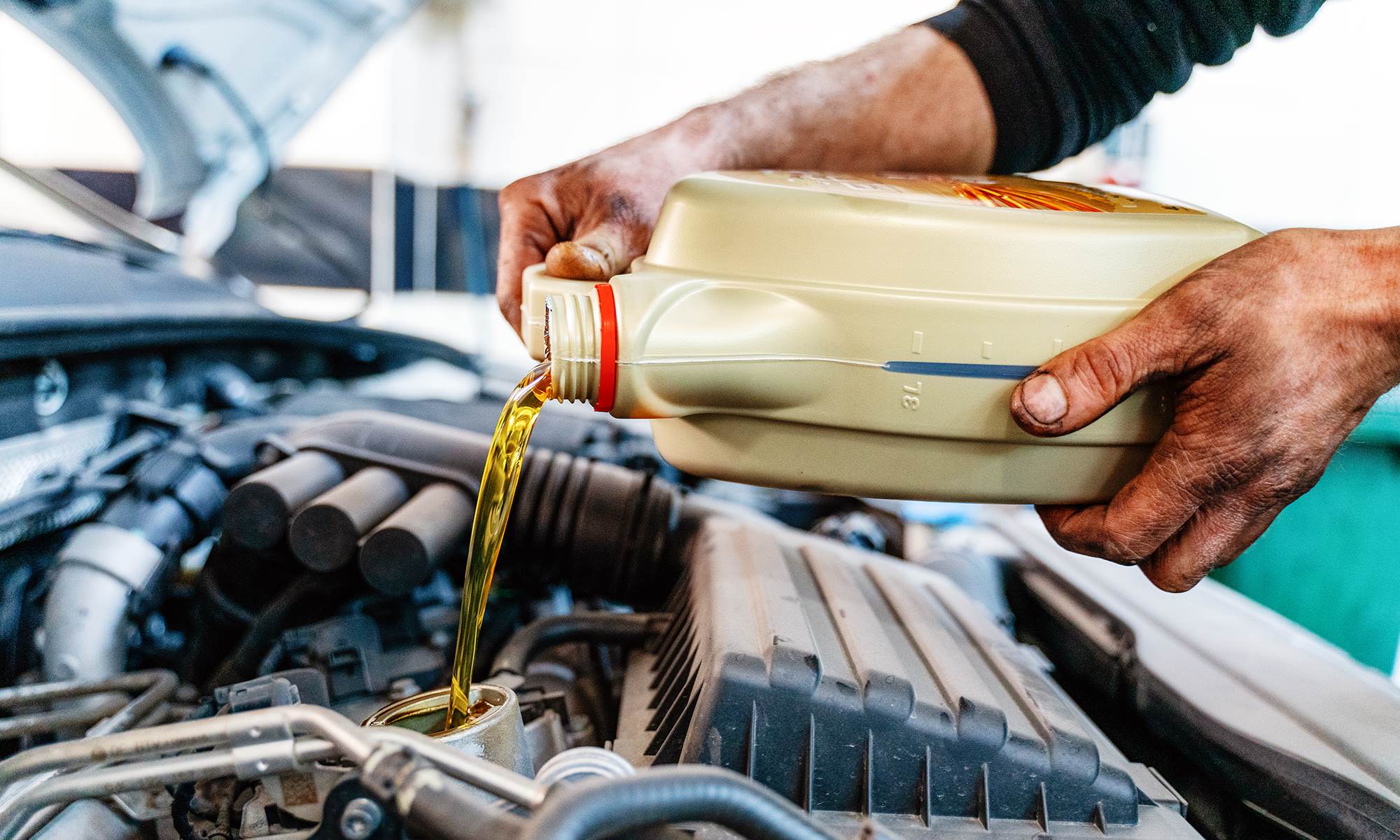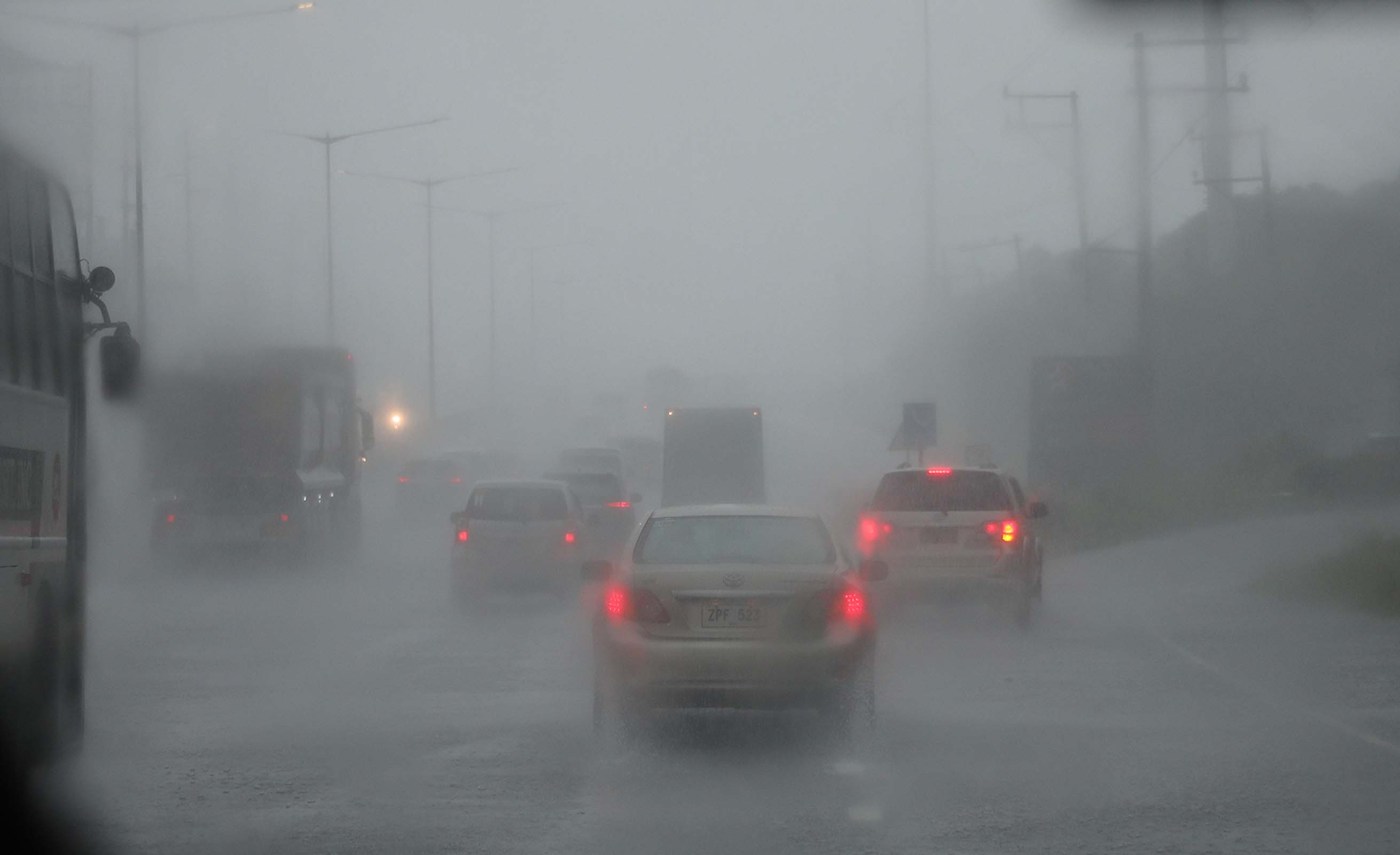Home>Automotive>Driving With A Cracked Oil Pan: A Risky Move You Won’t Believe!


Automotive
Driving With A Cracked Oil Pan: A Risky Move You Won’t Believe!
Published: January 23, 2024
Learn the dangers of driving with a cracked oil pan and why it's a risky move for your vehicle. Discover how to address this automotive issue before it causes further damage.
(Many of the links in this article redirect to a specific reviewed product. Your purchase of these products through affiliate links helps to generate commission for Regretless.com, at no extra cost. Learn more)
Table of Contents
Introduction
Driving with a cracked oil pan is a risky move that can lead to severe consequences for your vehicle. An oil pan is a crucial component of the engine's lubrication system, and any damage to it can have a domino effect on the entire engine. Understanding the function of the oil pan, the causes of cracks, the potential risks, and the signs to look out for is essential for maintaining the health of your vehicle. In this article, we will delve into the intricacies of the oil pan, the perils associated with a cracked oil pan, and the necessary steps to address this issue. Whether you're a seasoned car enthusiast or a novice driver, the information provided here will shed light on the importance of addressing a cracked oil pan promptly. Let's explore the world beneath your vehicle's engine and uncover the potential hazards of driving with a cracked oil pan.
Read more: You Won’t Believe What Happens When You Drive Your Car With Only 5% Engine Oil Life Left!
What is an oil pan and its function?
The oil pan, also known as the oil sump, is a vital component of a vehicle's engine. It is a metal container located underneath the engine and is responsible for holding the engine oil. The primary function of the oil pan is to store the oil that lubricates the engine's moving parts, ensuring smooth operation and reducing friction.
In addition to storing the oil, the oil pan also serves as a reservoir that allows the oil pump to draw in the necessary lubricant to circulate through the engine. This continuous circulation of oil is essential for maintaining proper engine lubrication, cooling, and overall performance.
The oil pan is strategically positioned at the lowest point of the engine, allowing the oil to drain into it and be collected for recirculation. This design ensures that the oil can be easily accessed during an oil change, as the drain plug is typically located on the oil pan's underside.
Furthermore, the oil pan plays a crucial role in protecting the engine's internal components from debris and contaminants. It acts as a shield, preventing these harmful particles from entering the engine and causing damage to critical parts such as the crankshaft, connecting rods, and bearings.
Overall, the oil pan's function is integral to the overall health and longevity of the engine. It ensures that the engine remains properly lubricated, cooled, and protected from potential harm, making it a fundamental component of the vehicle's operation.
How does an oil pan crack?
The oil pan is subjected to a variety of stressors during its lifespan, making it susceptible to cracking under certain circumstances. Understanding the factors that can lead to an oil pan crack is essential for preemptive maintenance and avoiding potential damage to the engine.
One common cause of oil pan cracks is impact damage. When a vehicle navigates uneven terrain, encounters road debris, or experiences a significant impact from below, the oil pan can be compromised. The force of such impacts can lead to dents, punctures, or cracks in the oil pan, jeopardizing its structural integrity.
Corrosion also poses a threat to the oil pan's durability. Over time, exposure to moisture, road salt, and other corrosive elements can lead to the formation of rust on the oil pan's surface. This corrosion weakens the metal, making it more prone to developing cracks and leaks.
Another potential cause of oil pan cracks is over-tightening of the oil pan drain plug during routine maintenance. Excessive force applied to the drain plug can distort the oil pan's flange, creating stress points that may eventually lead to cracking.
Moreover, the constant exposure to extreme temperatures can contribute to the deterioration of the oil pan. The repeated cycles of heating and cooling, especially during engine operation, can lead to metal fatigue, eventually resulting in cracks in the oil pan.
Furthermore, the aging of the vehicle and prolonged exposure to the elements can also contribute to the degradation of the oil pan's material, making it more susceptible to cracking.
In some cases, poor installation of aftermarket parts, such as skid plates or engine mounts, can exert undue pressure on the oil pan, leading to structural damage over time.
Understanding the potential causes of oil pan cracks underscores the importance of regular inspection and maintenance. By addressing these factors proactively, drivers can mitigate the risk of oil pan damage and its subsequent repercussions on the engine's performance and longevity.
The risks of driving with a cracked oil pan
Driving with a cracked oil pan poses a myriad of risks that can have detrimental effects on the vehicle's engine and overall safety. The consequences of neglecting a cracked oil pan extend beyond the immediate inconvenience, potentially leading to costly repairs and compromised driving conditions.
Oil Leakage:
A cracked oil pan compromises the containment of the engine oil, leading to leakage. The loss of oil can result in reduced lubrication of the engine's moving parts, increasing friction and heat generation. This, in turn, can accelerate wear and tear on critical components, potentially leading to engine failure if left unaddressed.
Engine Damage:
Insufficient lubrication due to oil leakage from a cracked oil pan can result in severe damage to the engine. Without adequate lubrication, the engine's internal components, such as the crankshaft, bearings, and pistons, are at risk of increased friction and heat, potentially causing premature wear and even catastrophic failure.
Overheating:
The leaked oil from a cracked oil pan can also lead to overheating of the engine. Engine oil plays a crucial role in dissipating heat and maintaining optimal operating temperatures. When oil levels are compromised due to leakage, the engine becomes more susceptible to overheating, which can lead to warped components, reduced efficiency, and potential safety hazards.
Environmental Impact:
Oil leakage from a cracked oil pan can have detrimental effects on the environment. Spilled oil can contaminate soil, water sources, and ecosystems, posing a threat to wildlife and the surrounding environment. It is essential to address oil leaks promptly to mitigate the environmental impact and adhere to environmental regulations.
Safety Concerns:
Driving with a cracked oil pan introduces safety hazards, as the compromised lubrication and potential overheating can lead to unpredictable engine performance. Sudden engine failure or loss of control due to mechanical issues poses a significant risk to the driver, passengers, and other road users.
Costly Repairs:
Neglecting a cracked oil pan can result in costly repairs, as the damage caused to the engine and associated components may necessitate extensive repairs or even engine replacement. Addressing the issue promptly can help prevent further damage and mitigate the financial burden of extensive repairs.
In essence, the risks of driving with a cracked oil pan encompass a wide range of potential consequences, including engine damage, safety hazards, environmental impact, and financial implications. Recognizing these risks underscores the importance of promptly addressing any issues related to the vehicle's oil pan to maintain optimal engine performance and overall safety.
Signs of a cracked oil pan
Detecting the signs of a cracked oil pan is crucial for identifying potential issues and taking proactive measures to address them. While the oil pan is located underneath the vehicle and not readily visible, there are several indicators that can alert drivers to the presence of a cracked oil pan.
-
Oil Puddles Under the Vehicle: One of the most apparent signs of a cracked oil pan is the presence of oil puddles beneath the vehicle when parked. These puddles may appear directly below the engine or towards the front of the vehicle, indicating a potential oil leak from the cracked oil pan.
-
Visible Oil Leaks: Inspecting the underside of the vehicle may reveal visible oil leaks originating from the oil pan. The presence of oil dripping or accumulating on the surface of the oil pan can indicate a crack or puncture that requires immediate attention.
-
Engine Overheating: A cracked oil pan can lead to reduced oil levels, compromising the engine's lubrication and cooling capabilities. As a result, the engine may experience overheating, potentially triggering warning lights on the dashboard or noticeable fluctuations in the engine's temperature gauge.
-
Unusual Engine Noises: Insufficient lubrication due to oil leakage from a cracked oil pan can result in increased friction and mechanical stress within the engine. This may manifest as unusual knocking, tapping, or grinding noises emanating from the engine compartment, signaling potential damage caused by inadequate lubrication.
-
Oil Pressure Warning Light: A cracked oil pan can lead to a drop in oil pressure, triggering the oil pressure warning light on the vehicle's dashboard. This indicator serves as an early warning of potential oil-related issues, prompting drivers to investigate the source of the problem, including the possibility of a cracked oil pan.
-
Visible Damage to the Oil Pan: A thorough visual inspection of the oil pan may reveal visible signs of damage, such as dents, punctures, or cracks on its surface. While the oil pan is not typically exposed, inspecting it during routine maintenance or when accessing the underside of the vehicle can help identify potential issues.
-
Burning Oil Smell: A cracked oil pan can lead to oil leakage onto hot engine components, resulting in a distinct burning oil smell. Drivers may notice this odor when exiting the vehicle after driving, indicating potential oil leaks and the need for further inspection.
Recognizing these signs of a cracked oil pan empowers drivers to address potential issues promptly, safeguarding the engine's performance and preventing further damage. By remaining vigilant and responsive to these indicators, drivers can take proactive steps to maintain the integrity of the oil pan and the overall health of the vehicle.
What to do if you have a cracked oil pan
If you suspect or confirm that your vehicle has a cracked oil pan, it is essential to take immediate action to mitigate potential damage and ensure the continued functionality of your vehicle. Here are the steps to consider if you find yourself facing this issue:
-
Assess the Severity: Begin by assessing the severity of the crack and the extent of oil leakage. If the crack is minor and the oil leak is minimal, you may have the option to temporarily address the issue to safely drive your vehicle to a repair facility. However, if the crack is substantial and the oil leak is significant, it is advisable to refrain from driving the vehicle to prevent further damage to the engine.
-
Safely Park the Vehicle: If the crack in the oil pan is severe or if there is a substantial oil leak, safely park the vehicle in a designated area away from traffic and potential hazards. This will prevent the spread of oil on roadways and minimize environmental impact.
-
Address Oil Leakage: If the oil leak is minimal and you need to drive the vehicle to a repair facility, consider using a temporary sealant or epoxy specifically designed for repairing oil pan cracks. These products can provide a temporary fix to contain the oil leak and allow you to drive the vehicle to a professional mechanic or automotive service center.
-
Tow the Vehicle: In cases where the crack in the oil pan is severe or the oil leak is substantial, it is advisable to arrange for the vehicle to be towed to a repair facility. Towing the vehicle will prevent further damage to the engine and ensure that the necessary repairs can be carried out safely and effectively.
-
Seek Professional Repairs: Once the vehicle is at a repair facility, consult with a qualified mechanic or automotive technician to assess the extent of the damage and determine the most appropriate course of action. Depending on the severity of the crack, the oil pan may need to be repaired using welding or replaced with a new or refurbished unit.
-
Comprehensive Inspection: In addition to addressing the cracked oil pan, it is crucial to conduct a comprehensive inspection of the surrounding components and the engine itself. This will help identify any potential damage caused by the oil leak and ensure that the engine is functioning optimally.
-
Preventative Measures: To prevent future occurrences of oil pan cracks, consider investing in a skid plate or protective guard for the oil pan, especially if you frequently drive on rough terrain or encounter debris-laden roads. Additionally, adhere to recommended maintenance schedules to ensure the overall health of the vehicle's components.
By following these steps and promptly addressing a cracked oil pan, you can safeguard the integrity of your vehicle's engine and mitigate the potential risks associated with oil leakage and inadequate lubrication. Prioritizing the timely repair and maintenance of the oil pan will contribute to the long-term performance and reliability of your vehicle.
Conclusion
In conclusion, the oil pan plays a pivotal role in safeguarding the health and performance of a vehicle's engine. Understanding the significance of the oil pan and the potential risks associated with a cracked oil pan is essential for maintaining the integrity of the engine and ensuring the safety of the vehicle. The implications of driving with a cracked oil pan extend beyond mere inconvenience, encompassing potential engine damage, safety hazards, environmental impact, and financial burdens.
Recognizing the signs of a cracked oil pan, such as oil puddles under the vehicle, visible leaks, engine overheating, unusual engine noises, oil pressure warning lights, visible damage to the oil pan, and burning oil smells, empowers drivers to take proactive measures to address potential issues promptly. By remaining vigilant and responsive to these indicators, drivers can mitigate the risk of engine damage and prevent further complications associated with oil leakage.
If a cracked oil pan is suspected or confirmed, it is crucial to assess the severity of the crack and the extent of oil leakage. Safely parking the vehicle and addressing the oil leakage through temporary measures or towing the vehicle to a repair facility are essential steps to prevent further damage and environmental impact. Seeking professional repairs and conducting a comprehensive inspection of the engine and surrounding components are vital for restoring the vehicle's functionality and ensuring long-term reliability.
Moreover, taking preventative measures, such as investing in a skid plate or protective guard for the oil pan and adhering to recommended maintenance schedules, can contribute to the prevention of future occurrences of oil pan cracks. By prioritizing the timely repair and maintenance of the oil pan, drivers can uphold the engine's performance and safeguard against potential risks associated with oil leakage and inadequate lubrication.
In essence, the oil pan serves as a guardian of the engine, preserving its well-being and longevity. By understanding the critical role of the oil pan, recognizing the signs of a cracked oil pan, and taking prompt and proactive measures to address potential issues, drivers can uphold the integrity of their vehicles and ensure safe and reliable driving experiences. Prioritizing the health of the oil pan is synonymous with prioritizing the health of the engine, underscoring the importance of proactive maintenance and attentive care for the vehicle's vital components.













